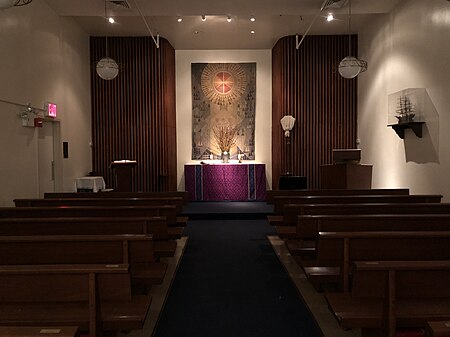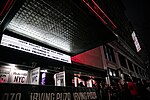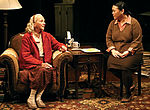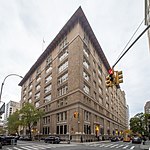Christ Church Lutheran (New York City)
1868 establishments in New York (state)19th-century Lutheran churches in the United StatesChurches completed in 1859Churches completed in 1948Churches in Manhattan ... and 7 more
Demolished buildings and structures in ManhattanDemolished churches in New York CityFormer Lutheran churches in the United StatesGothic Revival church buildings in New York CityLower East SideLutheran churches in New York CityReligious organizations established in 1868

Christ Church Lutheran is an Evangelical Lutheran Church in America church located near Union Square in Manhattan, New York City at 123 East 15th Street at Irving Place, in the Seafarer and International House. The congregation was founded as the Evangelical Lutheran Church of Christ in 1868 and has had four premises in its history.
Excerpt from the Wikipedia article Christ Church Lutheran (New York City) (License: CC BY-SA 3.0, Authors, Images).Christ Church Lutheran (New York City)
East 15th Street, New York Manhattan
Geographical coordinates (GPS) Address Nearby Places Show on map
Geographical coordinates (GPS)
| Latitude | Longitude |
|---|---|
| N 40.734647222222 ° | E -73.988 ° |
Address
East 15th Street 123
10003 New York, Manhattan
New York, United States
Open on Google Maps









